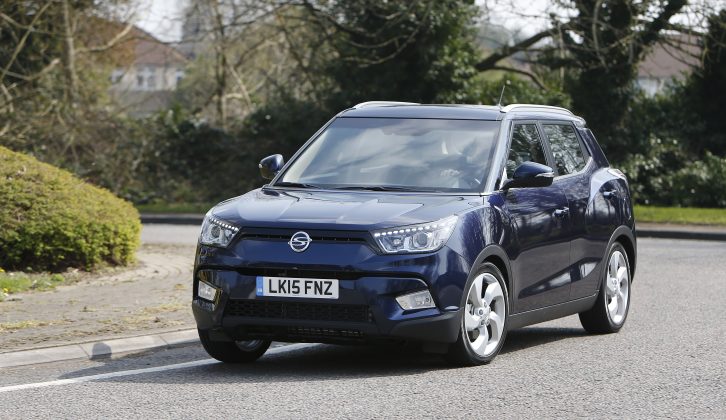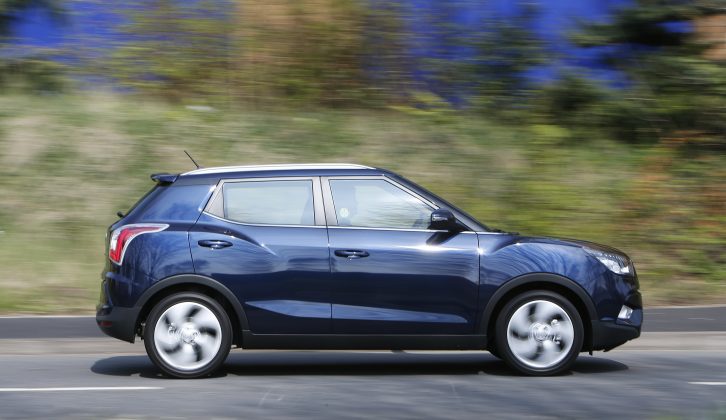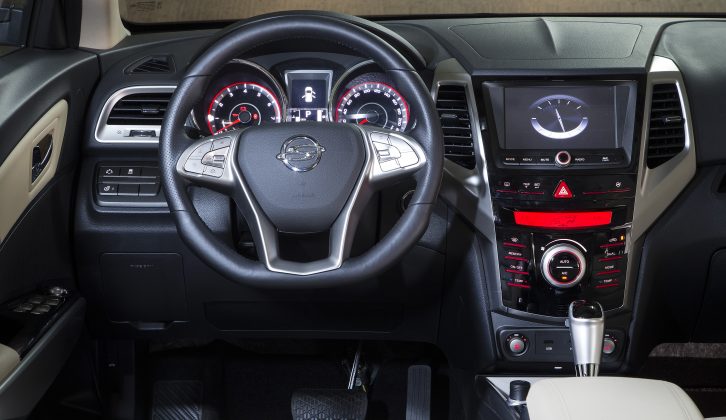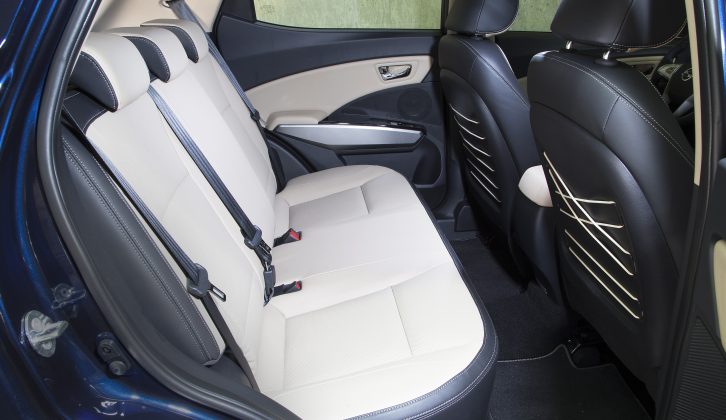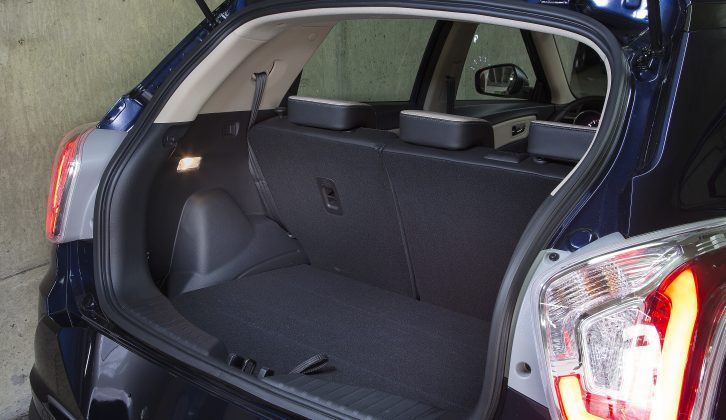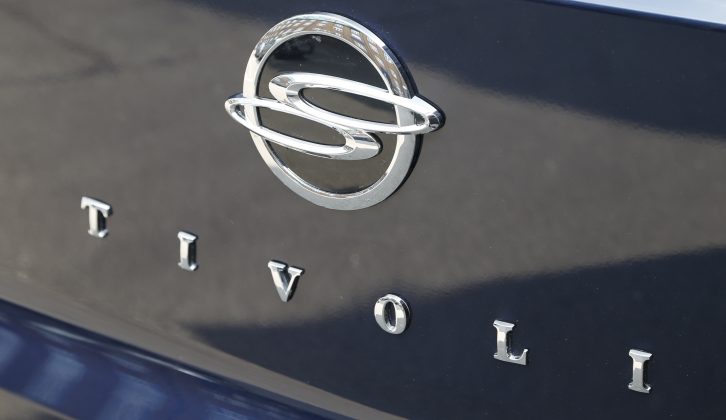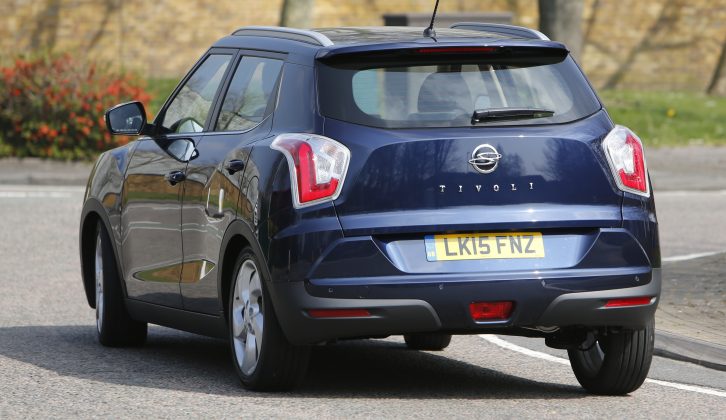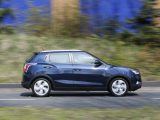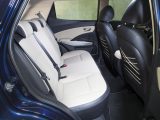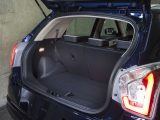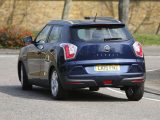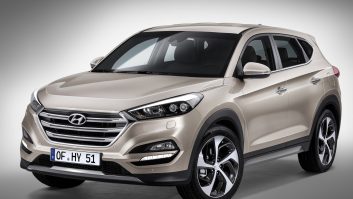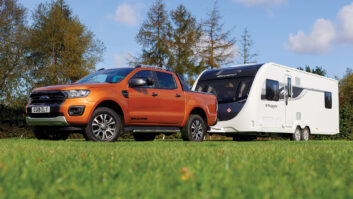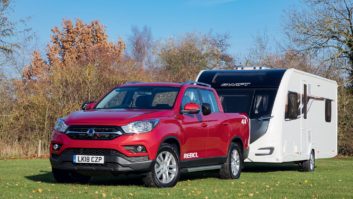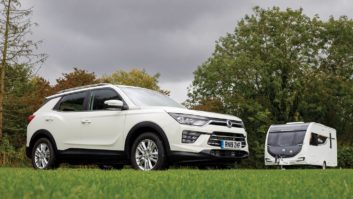In June, the new SsangYong Tivoli will arrive in British dealerships and the Korean manufacturer has openly admitted it hopes this new B-segment SUV will appeal to caravanners. Indeed, even back in January we had our eye on it, our tow car expert David Motton saying this was one of the new models to look out for in 2015, suggesting it could be one of the “most exciting small tow cars of the year”.
So a few weeks ahead of its UK on sale date, eager to see if it could deliver, we got behind the wheel. But, first, exactly what is the SsangYong Tivoli?
This is a brand new and very significant model for SsangYong, built to compete in a competitive market sector, hoping to steal sales from rivals such as the Renault Captur, the Mazda CX-3 and the Nissan Juke. And in terms of price it is very competitive indeed, the range’s starting price of £12,950 meaning it undercuts the entry-level Juke.
At launch in June, power for this five-seat baby SUV comes from a 126bhp/118lb ft torque 1.6-litre petrol engine, this to be joined by a 113bhp/221lb ft torque 1.6-litre diesel engine in August. Buyers can choose a six-speed manual or a six-speed automatic gearbox (the latter at a £1000 premium), and all petrols are front-wheel drive, whereas you can elect to have front- or four-wheel drive if you buy a diesel.
The Tivoli sits on an all-new platform. It is 4195mm long, with a 2600mm wheelbase, and 1795mm wide. You’ll also get 423 litres of boot space, split/folding rear seats ready to give you more space if you need it.
Depending on the engine and gearbox combination, and whether the model in question has two- or four-wheel drive, kerbweights range from 1270kg for the petrol version with a manual transmission, to 1390kg for a four-wheel drive diesel. This gives an 85% match figure, as usually recommended for safe towing, of at least 1080kg.
Sadly, a towing limit of 1000kg on the petrol models rules it out for all but the most lightweight caravans, but this is comparable to rivals such as the Captur, so it’s perhaps not unexpected. Diesels have a higher, 1500kg limit which is more useful for more caravanners.
Three trim lines will be available in the UK, SE, EX and ELX. Included in the entry-level SE are cloth trim, alloy wheels, cruise control and seven airbags. The option of an automatic gearbox on the petrol model, leather upholstery, heated front seats and a rear view camera are some of the extras you get with the mid-range EX, while the range topping ELX brings, amongst other items, TomTom sat-nav, rain sensing wipers and front and rear parking sensors as standard.
SsangYong is also keen to capitalise on the recent trend for personalisation, the ‘My Tivoli’ programme allowing buyers to customise their model. If a two-tone colour roof or a red leather interior float your boat, look no further.
So, those are the key facts and figures, but what’s it like in the metal? Unlike the rounded, slightly squidgy looking forms of its Juke, Captur and CX-3 rivals, harder lines characterise the Tivoli’s styling. To my eyes, squint a bit and in profile it’s not a million miles away from the Range Rover Evoque, which can be no bad thing for SsangYong’s kudos.
Open the door, slip inside and this SsangYong continues to impress. Concessions must be made for the fact that the car we drove was a left-hand drive, Korean-spec model, so kit and options seen here may not be available in these combinations in the UK. The eagle-eyed among you may also have spotted that the Korean SsangYong logo differs from that seen on British cars.
The smart and, in this example, leather upholstered cabin felt well screwed together, the controls nicely damped, the dash well lit and easy to read. It’s a stylish design that’s a match for the Tivoli’s rivals. There was a decent amount of adjustability in the driver’s seat that also gave ample support, plus the steering wheel was adjustable for rake, if not reach.
Rear seat space was good, too. I was informed that a six-foot tall passenger could sit behind a six-foot tall driver, although with neither to hand, we couldn’t test this. What was also clear was that the wide opening to the boot would help when loading, and I’m pleased to report that the bootlid itself was easy to reach and pull shut.
The Tivoli SsangYong made available to us was a petrol model with an automatic gearbox. On start-up, the needles swept to the red line and back again, which was probably about the most sporty the drive got, but that’s no bad thing. It’s a handsome car, but it’s built for comfort.
Still, it proved to be an easy companion during our drive. Although never seriously challenged, the petrol engine was refined around town. And as the diesel, the more likely tow car, has 221lb ft torque to the petrol’s 118lb ft, on paper, this variant promises more than adequate pulling power. In fact, as the petrol’s peak torque doesn’t kick in until 4600rpm, we suspect you’ll need to work the gears to get something reminiscent of meaningful performance when towing, whereas the diesel’s torque comes in between a more useful 1500 and 2500rpm.
The automatic gearbox we tested shifted smoothly and quietly, but we’d be interested to see what the manual is like – and if this affects engine noise. However, even over rough urban roads, there was little to complain about regarding the ride.
All models are fitted with so-called ‘Smart steering’, with normal, comfort and sport modes. Going from one extreme (normal) to the other (sport), a slight difference is felt in terms of the weight of the steering, but it’s almost negligible – it’s probably best to stick it in middling comfort mode and leave it there.
It’s always exciting when a car maker releases an all-new product, especially one as wallet-friendly as this, and especially when a manufacturer is brave enough to try and break into a segment as competitive as this one.
What tow car ability the SsangYong Tivoli will have remains to be seen, but we look forward to finding out.
Slip inside and this SsangYong continues to impress
